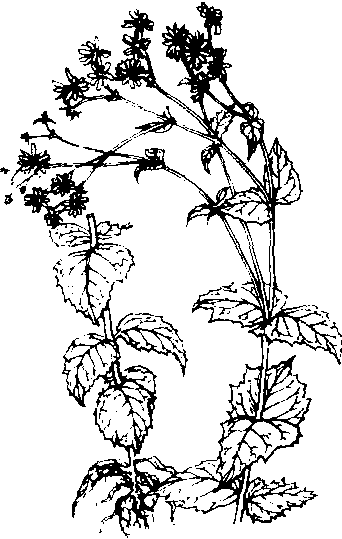串叶松香草silphium
Silphium perfoliatum L.,又称菊花草、杯状草。菊科,松香草属。多年生宿根植物。高产叶菜类饲用作物。原产北美高草原地带。美国为主要分布地区,俄罗斯、德国、瑞典和朝鲜半岛亦有饲用栽培,中国各省区均有引种。根粗壮,具根茎。茎丛生,直立,四棱,高2~3m。叶面皱缩,叶缘有缺刻,有毛;基生叶莲座状,有柄,茎生叶无柄。头状花序,花杂性,外缘2~3层雌花,花盘中为两性花。瘦果心脏形,褐色,外缘有翅。产量高,每公顷可产11.25万~15万kg。幼嫩时质脆多汁,有松香味。营养丰富,消化率高。适宜青饲和青贮,可饲喂各种畜禽。也是良好蜜源植物。

串叶松香草